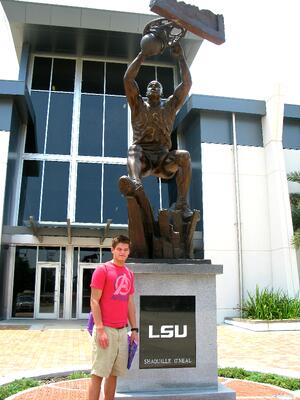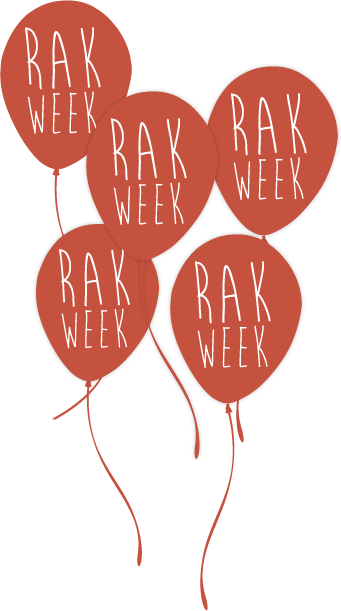You're celebrating Thanksgiving with all of your relatives from near and far. Maybe you'll brave the crowds and lines for Black Friday sales. Then, you plan to squeeze in a few minutes to capture some Cyber Monday deals. But the Tuesday after Thanksgiving is the real day to make a difference. I’m not talking about a putting a dent in your gift list with more items on sale. I’m talking about making a real impact in the lives of people and organizations that truly need your help. It’s called #Giving Tuesday. Started by the non-profit community and cultural center, 92nd Street Y (92Y), along with the United Nations Foundation and a core group of founding partners, #GivingTuesday is a national day of giving at the start of the holiday season.
The event builds on the American tradition of giving back by using technology to make a greater impact. The success #Giving Tuesday has prompted thousands of international and local non-profits, as well as civic minded corporations to join the movement. By harnessing the power of social media, the day is dedicated to helping everyone realize that they have the power to make a difference in someone’s life - to bring about real change in communities around the world.
More than 10,000 partners in all 50 states and around the world are taking part in the third annual event to refocus on giving thanks and giving back. Partners are large corporations and small businesses, faith-based organizations and secular nonprofits. If you don’t have a specific charity in mind, you can go to the #Giving Tuesday website and sort by the type of organization or look for charities by state. There’s every imaginable charity involved.
You can sort by your interests in arts, culture, animals, health, the environment, education, human services, or research and science. You can also choose to support local community groups, religious organizations, schools and universities, large or small companies, government agencies, and various projects sponsored by groups around the world.
With so many charities competing for your donation, you may want to research the organizations on Charity Navigator or the Better Business Bureau. Charity Navigator provides an unbiased, objective, numbers-based rating system to assess over 6,000 of America's charities. The non-profit organization also provides a list of giving tips to help you when choosing a charity.
Still not sure where to begin? Think about how you want to make an impact. Believe it or not, you can make a difference in a family’s life with $20 or less. Many of the organizations participating have catalogs with gifts ranging in price from $10 to thousands of dollars. Many work to end hunger, supply clean water, provide shelter, or assist people with starting their own business. Some provide disaster relief. Others help protect wildlife.
Here are just ten of the thousands of organizations participating in #Giving Tuesday.
World Vision is a Christian humanitarian organization dedicated to working with children, families, and their communities worldwide to reach their full potential by tackling the causes of poverty and injustice. Their catalog offers choices that make a difference starting at just $16. Gifts include clothing and jewelry that fund small business loans for entrepreneurs; goats that can nourish a hungry family, as well as provide income from surplus milk; and food kits to feed families in need.
communities worldwide to reach their full potential by tackling the causes of poverty and injustice. Their catalog offers choices that make a difference starting at just $16. Gifts include clothing and jewelry that fund small business loans for entrepreneurs; goats that can nourish a hungry family, as well as provide income from surplus milk; and food kits to feed families in need.
Feeding America helps provide fresh, healthy food for people facing hunger every day. Your gift of nutritious food like apples, peanut butter, rice, cheese, broccoli, oatmeal, bananas, and chicken can help families in communities across the country struggling with hunger.
Millennium Promise works to eradicate extreme poverty, hunger, and preventable disease by empowering communities to help themselves. Your donation can provide nutritious meals to children at school, skilled attendants to help mothers giving birth, clean water supplies, and it can help farmers grow more food to eat and sell.
The American Red Cross provides disaster relief around the world. Their catalog includes items like hot meals, blankets, emergency shelter, vaccinations, and first aid workers for those affected by disaster.
Mercy Corps helps people survive crises in some of the world’s toughest places. They help those affected confront and turn their situations into opportunities to thrive. Gifts in the Mercy Corps catalog range in price from under $50 to over $200 and help men and women in villages around the world earn an income. For as little as $18, you can buy a mosquito net or buy seeds for a family. You can give a sewing machine, outfit a classroom, fund a mobile health unit, or help start a fish hatchery. You can even buy a Yak, which can carry loads in mountainous areas, and produce valuable milk, as well as wool for blankets and clothing.
 Save the Children gives children in the U.S. and around the world a healthy start, the opportunity to learn, and protection from harm. Give joy and lasting change to a child when you choose from over 60 gifts in seven different categories, ranging from health and emergency relief, to animals, sports and education, and water and agriculture.
Save the Children gives children in the U.S. and around the world a healthy start, the opportunity to learn, and protection from harm. Give joy and lasting change to a child when you choose from over 60 gifts in seven different categories, ranging from health and emergency relief, to animals, sports and education, and water and agriculture.
World Wildlife Fund is an international organization that works in collaboration with existing conservation groups to bring substantial financial support to the conservation movement on a worldwide scale. Their catalog includes t-shirts, calendars, greeting cards, ornaments, etc. For $55, you can symbolically adopt a species. Your gift supports WWF's global efforts to protect wild animals and their habitats.
The United Nations Children’s Fund (UNICEF) works in more than 190 countries and territories to save and improve children's lives. You can help by giving blankets, vaccinations, purifying water tablets and gifts that support causes like emergencies, food, school transportation, and winter survival packs. Items as low as $15.00 include The Eat & Run bundle that combines Micronutrient Powder and a Soccer Ball to keep a vulnerable child healthy and happy. Gifts under $25 include vaccine carriers that can keep dozens of vaccine vials at the right temperature for 38 hours, even in scorching hot weather.
The International Rescue Committee (IRC) is on the ground in more than 40 countries, including the U.S., providing emergency relief, relocating refugees, and rebuilding lives in the wake of disaster. Their rescue gifts include providing a year of education for a young girl for only $58, clean water for $110, a honeybee harvest kit for $72 and for only $45 you can comfort children caught in crisis by sending them teddy bears.
If you want to volunteer in addition to donating funds, but not sure where to start, visit NobleHour, a small company with a big mission to provide an online platform that enables and facilitates community engagement. Companies can create free profiles for their organization and get the word out about themselves, as well as find help by posting volunteer opportunities for free. NobleHour helps school districts, colleges, universities, non-profits, and businesses throughout the US and Canada track and measure service-learning, volunteering, and community service initiatives.
The company was started in 2007 by a student looking for a way to find service opportunities in his area. It grew from a simple online database of service opportunities to over 180,000 members, over 6,000 organizations, and over 4,000 opportunity listings. Since their relaunch in 2012, users have tracked over 4.5 million service hours, with an economic impact of over $95,000,000.
So whether you just want to donate in your name, you’re looking for the perfect gift for someone who has everything, or you want to volunteer, #Giving Tuesday is the perfect opportunity to be generous with others and embrace the true meaning of the holidays. What are you going to give today? Share your gift list with us!
 did not create this holiday. In fact the idea originated in 1970 when Marian McQuade, a housewife in West Virginia, initiated a grassroots campaign to set aside a special day just for Grandparents. McQuade felt deeply about the lonely elderly in nursing homes and was also a tireless advocate for senior citizens rights. After three years of working with civic, business, church, and political leaders, West Virginia Governor Arch A. Moore proclaimed the first National Grandparents Day. McQuade didn’t stop there. She petitioned governors in 49 states to follow West Virginia’s lead and set aside a Grandparents Day. Forty-three of those states declared it a holiday. In 1978, President Jimmy Carter proclaimed the first Sunday after Labor Day as the official National Grandparents Day.
did not create this holiday. In fact the idea originated in 1970 when Marian McQuade, a housewife in West Virginia, initiated a grassroots campaign to set aside a special day just for Grandparents. McQuade felt deeply about the lonely elderly in nursing homes and was also a tireless advocate for senior citizens rights. After three years of working with civic, business, church, and political leaders, West Virginia Governor Arch A. Moore proclaimed the first National Grandparents Day. McQuade didn’t stop there. She petitioned governors in 49 states to follow West Virginia’s lead and set aside a Grandparents Day. Forty-three of those states declared it a holiday. In 1978, President Jimmy Carter proclaimed the first Sunday after Labor Day as the official National Grandparents Day. cookies!
cookies! 
 Springtime is around the corner. That means high school seniors are eagerly awaiting
Springtime is around the corner. That means high school seniors are eagerly awaiting

 isn't as bitter as last year, we’ve still got a long way to go with no end in sight. And, we are not alone! Even Southern states are dealing with frigid cold temperatures, ice storms, ridiculous wind chills and hazardous driving conditions. The only people enjoying this crazy weather are the students receiving snow days. The cold days and grey skies take their toll. It’s not easy to be bright and cheery when you’re covered head to toe in fleece, wool and long underwear. It’s just really hard to be nice when you can’t feel your toes.
isn't as bitter as last year, we’ve still got a long way to go with no end in sight. And, we are not alone! Even Southern states are dealing with frigid cold temperatures, ice storms, ridiculous wind chills and hazardous driving conditions. The only people enjoying this crazy weather are the students receiving snow days. The cold days and grey skies take their toll. It’s not easy to be bright and cheery when you’re covered head to toe in fleece, wool and long underwear. It’s just really hard to be nice when you can’t feel your toes. kindness and pass it on to others. Their goals are to:
kindness and pass it on to others. Their goals are to:
 communities worldwide to reach their full potential by tackling the causes of poverty and injustice. Their
communities worldwide to reach their full potential by tackling the causes of poverty and injustice. Their  Save the Children
Save the Children While students are home for break or off for the holidays, a great community service activity is to volunteer at the food depository. School groups, service clubs, and individuals can help repack bulk food products into individual/family sizes. The food depository posts their
While students are home for break or off for the holidays, a great community service activity is to volunteer at the food depository. School groups, service clubs, and individuals can help repack bulk food products into individual/family sizes. The food depository posts their 





